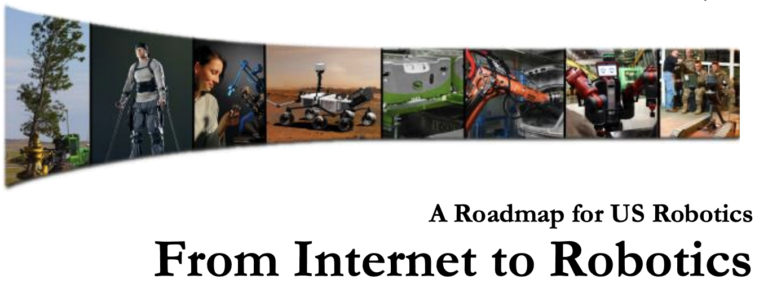
In 2009, the Computing Community Consortium (CCC) held a community effort to develop A Roadmap for US Robotics, which explored the capacity of robotics to act as a key economic enabler, specifically in the areas of manufacturing, healthcare, and the service industry, 5, 10, and 15 years into the future. The result of the effort was this report, which played a key role in creating the National Robotics Initiative.
An updated version of the Robotics Roadmap was released in March 2013, November 2016, and now most recently in September 2020, all led by Henrik Christensen (Qualcomm Chancellor’s Chair of Robot Systems and a Professor of Computer Science at Dept. of Computer Science and Engineering UC San Diego).
Due to the many changes since September 2020, the CCC published a a mid-cycle update in April 2023. The next full update will be published as planned in 2024.
With the support of the CCC, three community workshops took place 11-12 September 2019 in Chicago, IL, 17-18 October 2019 in Los Angeles, CA, and 15-16 November 2019 in Lowell, MA. The input from the workshops was coordinated and synthesized at a workshop in San Diego, CA in February 2020. In total, the workshops involved 79 people from industry, academia, and research institutes. The 2016 roadmap was reviewed, and progress was assessed as a basis for formulation of updates to the roadmap.
The resulting 2020 roadmap is the summary of the main societal opportunities identified, the associated challenges to deliver desired solution and a presentation of efforts to be undertaken to ensure the US will continue to be a leader in robotics both in terms of research innovation, adoption of the latest technology, and adoption of appropriate policy frameworks that ensure that the technology is utilized in a responsible fashion.
Some of the needs identified include:
- New research on materials, integrated sensors, and planning/control methods.
- New R&D in multi-robot coordination, robust computer vision for recognition, and modeling and system-level optimization.
- Increase the performance of situational awareness, robustness, and types of services offered.
- Increase training of the workforce to ensure efficient utilization of new technologies.
- Ensure that adequate policy frameworks are in place to allow the US to be at the forefront of the design and deployment of new technologies.






